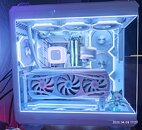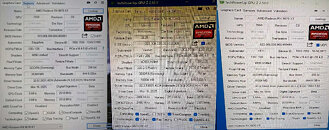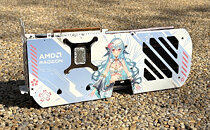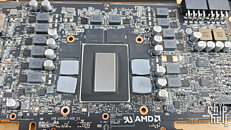Clock Speed Disparities Noted Between Yeston's Radeon RX 9060 XT GAEA 16 GB & 8 GB SKUs
Earlier in the week, Yeston revealed a sci-fi/cyberpunk character-themed Radeon RX 9060 XT 16 GB Game Ace SKU. Eager followers of the Chinese brand were wondering whether additional custom designs—based on AMD's Navi 44 XT GPU—were in the pipeline, possibly ready in time for an official June 5 launch. In Yeston's case, they expect to start shipping on June 7—exclusively for the Chinese market. Fortunately, several dual-fan "GAEA" and triple-fan "Game Ace White" models have turned up on Yeston's JD.com storefront. VideoCardz has pored over the fundamentals, and quickly realized that there are key differences—in terms of GPU clock speeds—when cross-referencing entry-level/barebones GAEA 16 GB and 8 GB card specifications.
The latter variant seems to exist as Yeston's absolute baseline MSRP option; its pre-order tag is 2499 RMB, including VAT. Curiously, pre-launch info seems to show the 16 GB sibling (2899 RMB, inc. VAT) possessing elevated boost and game clocks: 3230 MHz and 2620 GHz (respectively). The lesser model makes do with Team Red's reference figures: 3130 MHz and 2530 MHz (respectively). VideoCardz believes that this is an isolated case; they have not stumbled upon similar spec disparities between product family members—be it with other AIBs or within Yeston's stable. It could be safe to assume that Yeston's product pages contain inaccurate or placeholder numbers.
The latter variant seems to exist as Yeston's absolute baseline MSRP option; its pre-order tag is 2499 RMB, including VAT. Curiously, pre-launch info seems to show the 16 GB sibling (2899 RMB, inc. VAT) possessing elevated boost and game clocks: 3230 MHz and 2620 GHz (respectively). The lesser model makes do with Team Red's reference figures: 3130 MHz and 2530 MHz (respectively). VideoCardz believes that this is an isolated case; they have not stumbled upon similar spec disparities between product family members—be it with other AIBs or within Yeston's stable. It could be safe to assume that Yeston's product pages contain inaccurate or placeholder numbers.





























































































